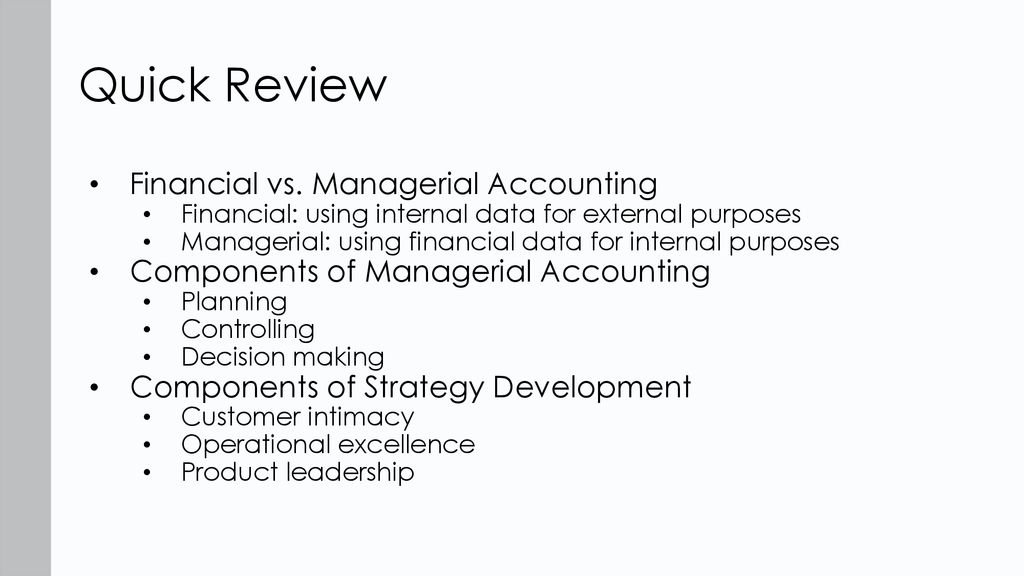
I got a university degree to learn how financial statements work and how those numbers come together to give you a comprehensive financial picture. Now, you can’t go off creating your different financial statements all willy nilly. Finally, ethical considerations such as integrity, objectivity, confidentiality, professional competence, and due diligence must be taken into account to ensure accurate financial statement preparation. Audit opinions are the conclusions auditors reach after reviewing a company’s financial statements. Financial statement preparation is a crucial aspect of a company’s financial management, involving the recording and reporting of its financial transactions and activities.
Stay up to date on the latest accounting tips and training
- Also, information from the previous statement is used to develop the next one.
- There are several types of audits, including internal audits, external audits, and regulatory audits.
- The first in the order of financial statements is the income statement.
- A qualified opinion suggests that there are specific issues or departures from accounting standards, but the financial statements are still fairly presented.
- You can even use your cash flow statements to create a cash flow forecast or projection.
Next, in the order of financial statements, is the statement of retained earnings. Use your net profit or loss from the income statement to prepare this next statement. After you gather information about the net profit or loss, you can see your total retained earnings and, if applicable, how much you will pay to investors. The preparation of financial statements involves the process of aggregating accounting information into a standardized set of financials. The completed financial statements are then distributed to management, lenders, creditors, and investors, who use them to evaluate the performance, liquidity, and cash flows of a business. The preparation of financial statements includes the following steps (the exact order may vary by company).
Balance Sheet

The first step in financial statement preparation is identifying and gathering relevant financial data from a company’s accounting records. This process involves collecting information on transactions, such as sales, expenses, investments, and borrowings, and organizing it in a systematic manner. Last but not least, use all of your financial data from your other three statements to create your cash flow statement. Your cash flow statement shows you how cash has changed in your revenue, expense, asset, liability, and equity accounts during the accounting period. Even if your company is turning a profit, it may be falling short because you don’t have adequate cash flow.
Financial Statement Preparation
It shows revenue from primary income sources, such as sales of the company’s products, and secondary sources, like if the company sublets a portion of its business premises. The regulatory framework, consisting of accounting standards such as GAAP and IFRS, establishes guidelines and rules for financial statement preparation. These standards ensure that financial statements are consistent, reliable, and comparable across companies and time periods. Adhering to the regulatory framework is crucial for businesses to maintain trust among stakeholders and comply with legal requirements.
As you know by now, the income statement breaks down all of your company’s revenues and expenses. You need your income statement first because it gives you the necessary information to generate other financial statements. It’s not the flashiest part of running a small business, but analyzing the financial data from your small business on a regular basis is vital to the health of your company. Maintaining the proper financial statements helps you determine your business’ financial position at a specific point in time and over a specified period. You just need to understand what each financial statement tells you and where the information in those statements comes from.
Accrue an income tax expense, based on the corrected income statement. Ideally, the income tax rate should be based on your estimate of the average tax rate that will apply for the entire fiscal year. Conduct an ending physical inventory count, or use an alternative method to estimate the ending inventory balance. Use this information to derive the cost of goods sold, and record the amount in the accounting records. Compare the shipping log to accounts receivable to ensure that all customer invoices have been issued. Cash flow from investing activities includes cash what is a contra account the motley fool received from the sale of securities and cash paid to buy new assets like land and equipment, among other things.
It shows the company’s ability to generate profits by measuring the difference between revenues and expenses. Financial statements provide a comprehensive overview of a company’s financial performance, position, and cash flows, aiding in decision-making and financial analysis. After all, preparing financial statements requires a working knowledge of accounting concepts like double-entry accounting, accrual basis accounting, and the accounting cycle. Then, list out any expenses your company had during the period and subtract the expenses from your revenue.
Adjusting entries are generally for unrecognized income or expenses for the period. The next step is to post journal entries to sub-ledger accounts, which are accounts that record details and provide more context than the overarching general ledger. Sales transactions are posted to the sales ledger, credit sales are recorded in the accounts receivable ledger, and so on tax season when you’re self employed vs freelance – you get the idea.
We and our partners process data to provide:
For example, assets include cash, accounts receivable, property, equipment, office supplies and prepaid rent. Liabilities include accounts payable, notes payable, any long-term debt the business has and taxes payable. Financial statements are summary-level documents that provide details about a company’s financial position at a given point in time. Typically a balance sheet, cash-flow statement, what does an accountant do roles responsibilities and trends and income or profit and loss statement are included. This method allows for easy comparison of financial statements across different companies or time periods.
